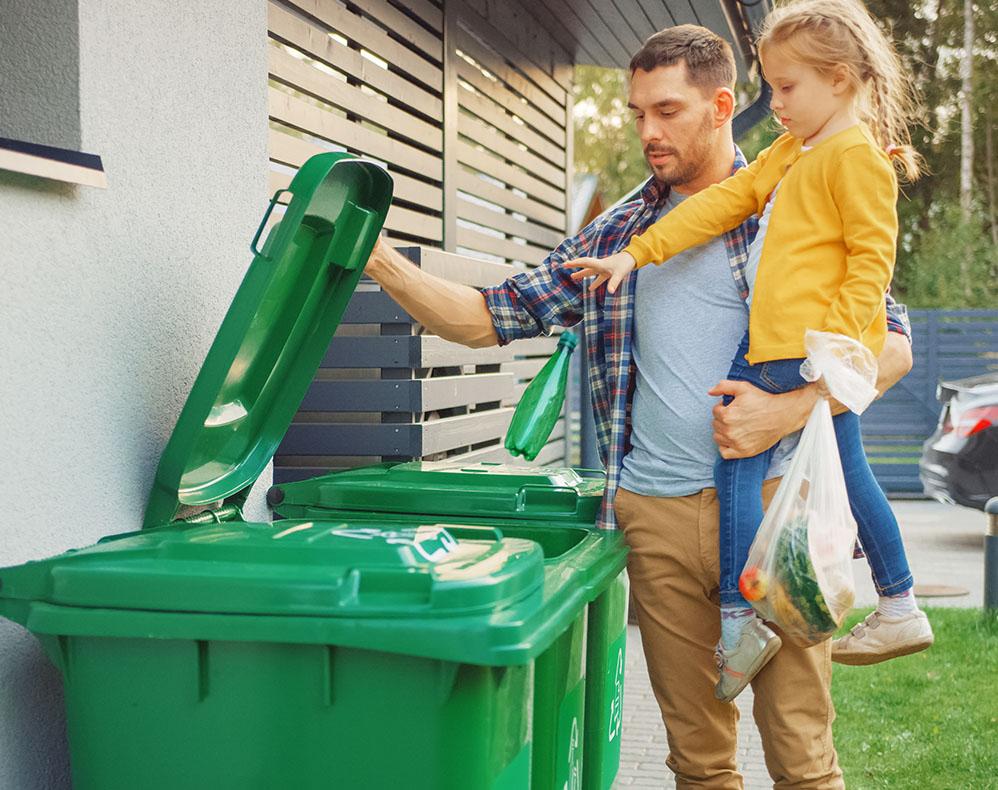You could say we’re a little obsessive about our packaging. That’s because we believe that packaging shouldn’t only hold the good stuff—it should be the good stuff. Our amazing team of Packaging Engineers have helped make Seventh Generation the industry leader in the use of PCR (post-consumer recycled) packaging, and we’re setting even bolder goals for the future. Using recycled materials diverts waste from ending up in the landfill, and by our use of PCR plastic and paper—we’re stepping into a more sustainable future for ourselves and future generations.
So…what exactly does PCR (post-consumer recycled) content mean?
Do you ever wonder what happens to all those milk jugs, newspapers, and cardboard boxes that you put out on recycling day? Well now that they have been used, recycled and re-purposed - they have become 'post-consumer recycled' material. For Seventh Generation products and packaging, paper and plastic gains a second (or third, or fourth) life - such as our recycled toilet paper (minimum 50% post-consumer recycled content), and our 90 fl. oz laundry detergent bottle, which is made from 100% PCR plastic. So, the more you recycle those milk jugs and bottles, the more PCR materials companies like ours have access to, which helps us rely less and less on virgin plastic.
To further divert waste, we also use pre-consumer recycled materials, which are materials that are recycled or utilized after the manufacturing process, but never make it to consumers. For instance, paper scraps or plastic shavings collected during the manufacturing process.
How is using recycled plastic different from new plastic?
Simply put, recycled plastic is less wasteful than new plastic. That’s because new plastic mostly comes from non-renewable fossil fuels like petroleum, which are hard on the environment1. By contrast, recycled plastics require no “virgin” petroleum to be sourced and divert recycled materials from ending up in a landfill, so they reduce the environmental burden.
Cool, huh?
That’s why we’re constantly looking to increase our use of PCR plastic and innovating in other ways to create more sustainable packaging.
Check out our EasyDose Ultra Concentrated Laundry Detergent bottle, for example. We knew there had to be a way to bring the same power and load-size of our traditional 90 fl. oz laundry detergent to a smaller package. A single squirt of EasyDose washes an entire load of laundry. Even better, because of its more compact size, the bottle uses 60% less plastic, 50% less water, and is 75% lighter than our 90 fl. oz bottle. When you choose less wasteful products and packaging, you’re contributing to a more sustainable future.
What’s Next?
Though we’re getting close, the reason 100% PCR plastic is still a goal is that for some parts of packaging, getting to 100% presents unique challenges that no one has ever really tackled before. Part of this is due to the quantity of PCR materials that we can access, and part of it is about performance and design in some parts of packaging, such as plastic caps and closures.
But our packaging engineers are innovating as we speak!
We hope you’ll agree that to create a healthier future for people and the planet, PCR materials just simply make more sense. We invite you to hold us accountable on our progress, and to join the movement to reduce plastic waste. A less-wasteful future is not merely an idea we should hope for—it’s a choice we can make.


